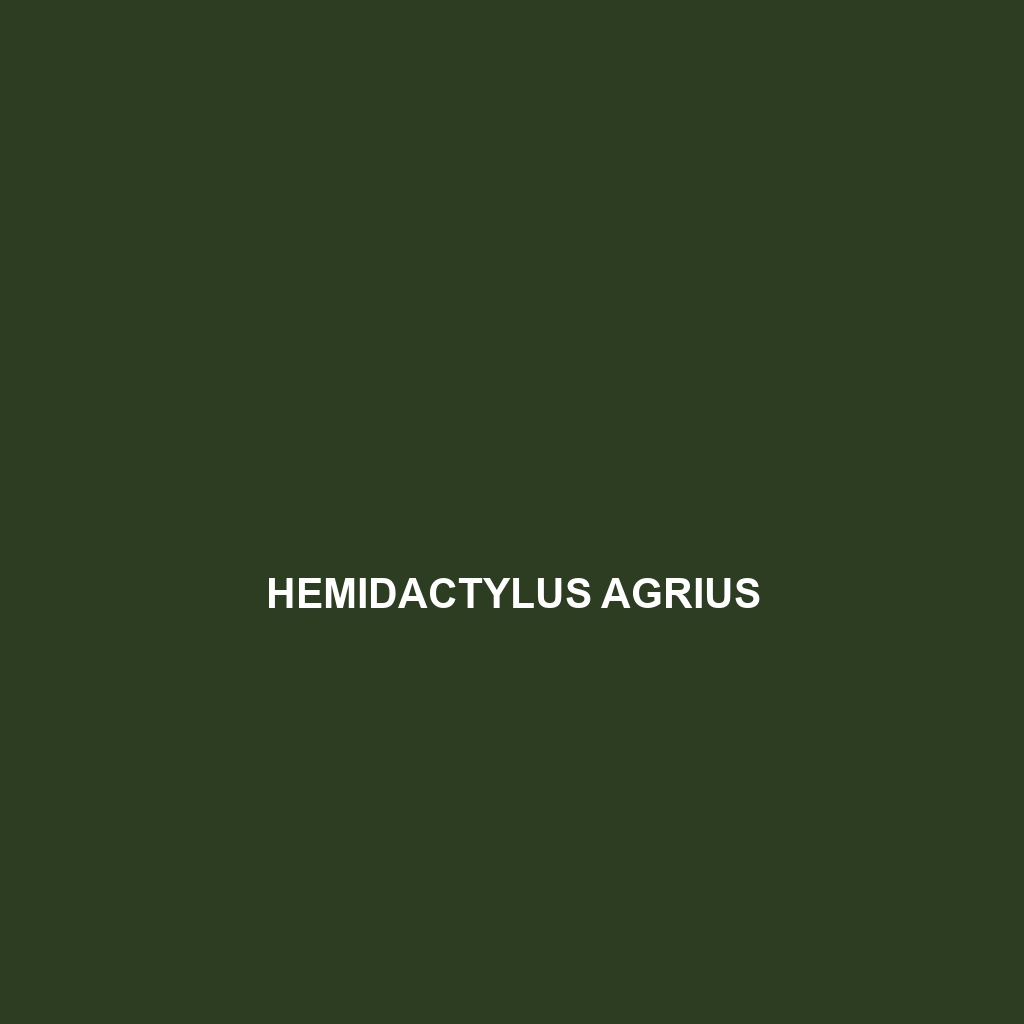Common Name
Hemidactylus afarensis
Scientific Name
Hemidactylus afarensis
Habitat
Hemidactylus afarensis, commonly known as the Afar Gecko, primarily inhabits the arid and semi-arid regions of East Africa, particularly within the Great Rift Valley and adjacent areas. Its favored environments include rocky outcrops, savannas, and dry woodlands, where it cleverly camouflages against the natural substrate. This species can also thrive in areas neighboring human settlements, where it often shelters in crevices and man-made structures. The Afar Gecko is adapted to environments with limited moisture, often found in regions characterized by a hot and dry climate, making it a resilient survivor in harsh conditions.
Physical Characteristics
Hemidactylus afarensis displays distinct physical features, marking it as a unique member of the gecko family. Typically, it measures around 10 to 15 cm in length. The Afar Gecko exhibits a slender body with a long tail, which serves as a vital asset for balance and agility. Its skin is predominantly a mottled brown or gray, with darker splotches, allowing it to blend seamlessly into its rocky habitat. Notably, its toes are equipped with specialized pads that facilitate climbing and gripping various surfaces, showcasing an evolutionary adaptation to its arboreal lifestyle.
Behavior
The behavioral traits of Hemidactylus afarensis contribute significantly to its survival. This species is primarily nocturnal, emerging at dusk to hunt and forage. During the day, it takes refuge in crevices or under rocks to avoid the intense daytime heat. Socially, these geckos are generally solitary, although they may be seen sharing territory, especially during mating seasons. Mating rituals often involve elaborate displays, including head bobbing and physical contact, to attract partners. Interestingly, the Afar Gecko showcases territorial behavior, defending its chosen area from rivals, thus highlighting its dynamic interaction with the environment.
Diet
Hemidactylus afarensis is classified as an insectivore, primarily feeding on a diet rich in various insects such as crickets, moths, and beetles. Its hunting method includes active foraging and ambush tactics, utilizing its adept vision to spot prey during the night. The gecko’s diet can adjust based on food availability, occasionally leading it to consume other small invertebrates, demonstrating a degree of dietary flexibility. Overall, the Afar Gecko plays a crucial role in controlling insect populations, thus contributing to the ecological balance within its environment.
Reproduction
The reproductive cycle of Hemidactylus afarensis typically occurs in the warmer months, aligned with the seasonal availability of food. Mating generally takes place shortly after the rainy season, with females laying 1-2 eggs per clutch in sheltered areas. The gestation period spans about 30 to 45 days, culminating in the emergence of miniature versions of the adults, complete with functional limbs and coloration. Parental care is minimal; however, the strategic nesting sites selected by females enhance the likelihood of offspring survival, providing them with protection against predators.
Conservation Status
Presently, data on the conservation status of Hemidactylus afarensis indicates that it is classified as “Least Concern” by the International Union for Conservation of Nature (IUCN). However, ongoing habitat loss due to agricultural expansion and urbanization poses potential risks to local populations. Conservation efforts focusing on habitat protection and sustainable land-use practices are crucial for preserving the species and its ecological role in the environment.
Interesting Facts
One fascinating aspect of Hemidactylus afarensis is its remarkable ability to shed its tail when threatened, a defense mechanism known as autotomy. Following the loss, the gecko can regenerate its tail over time, albeit in a less perfect form than the original. Additionally, these geckos are known for their vocalizations, producing chirps and clicks, which serve as communication during mating or territorial disputes. Their adaptability and intriguing survival strategies make the Afar Gecko a subject of interest in herpetology.
Role in Ecosystem
Hemidactylus afarensis plays an essential role as a predator in its ecosystem, particularly as a natural controller of insect populations. By maintaining the balance of prey species, it contributes significantly to the health of its habitat. Furthermore, the gecko also serves as prey for larger predators, thus holding an important position in the food web. As a part of the intricate ecological interactions, this species aids in pollination processes and seed dispersal through its activities, underscoring its role as a versatile player in the environment.
